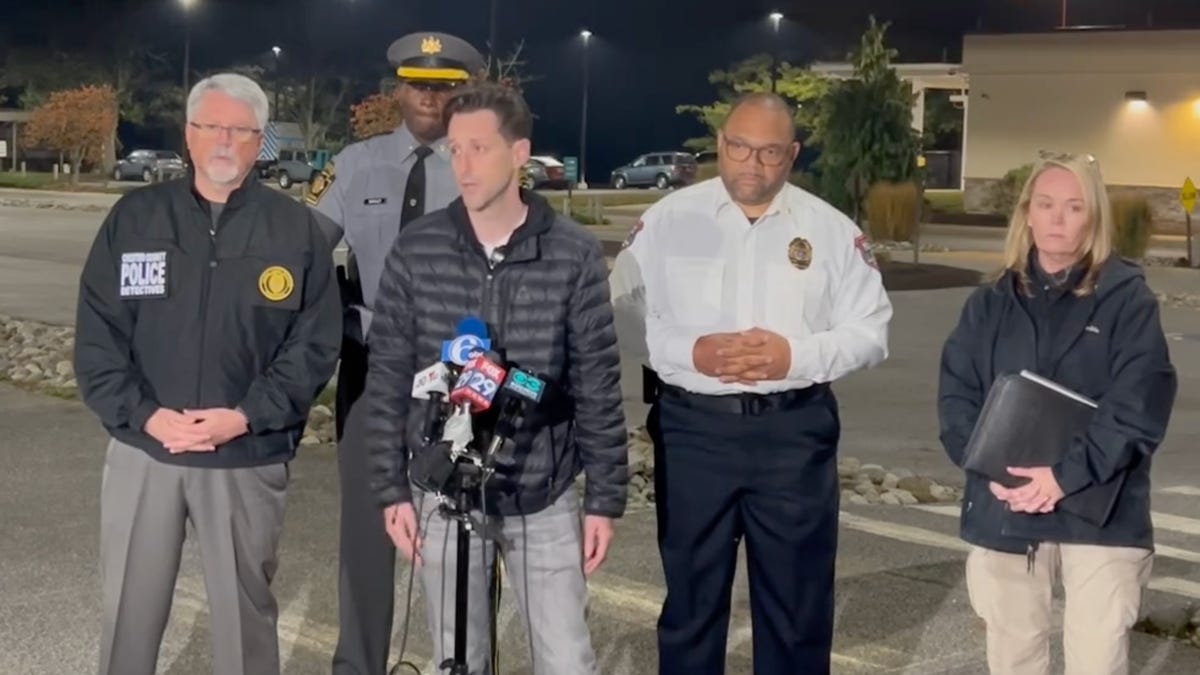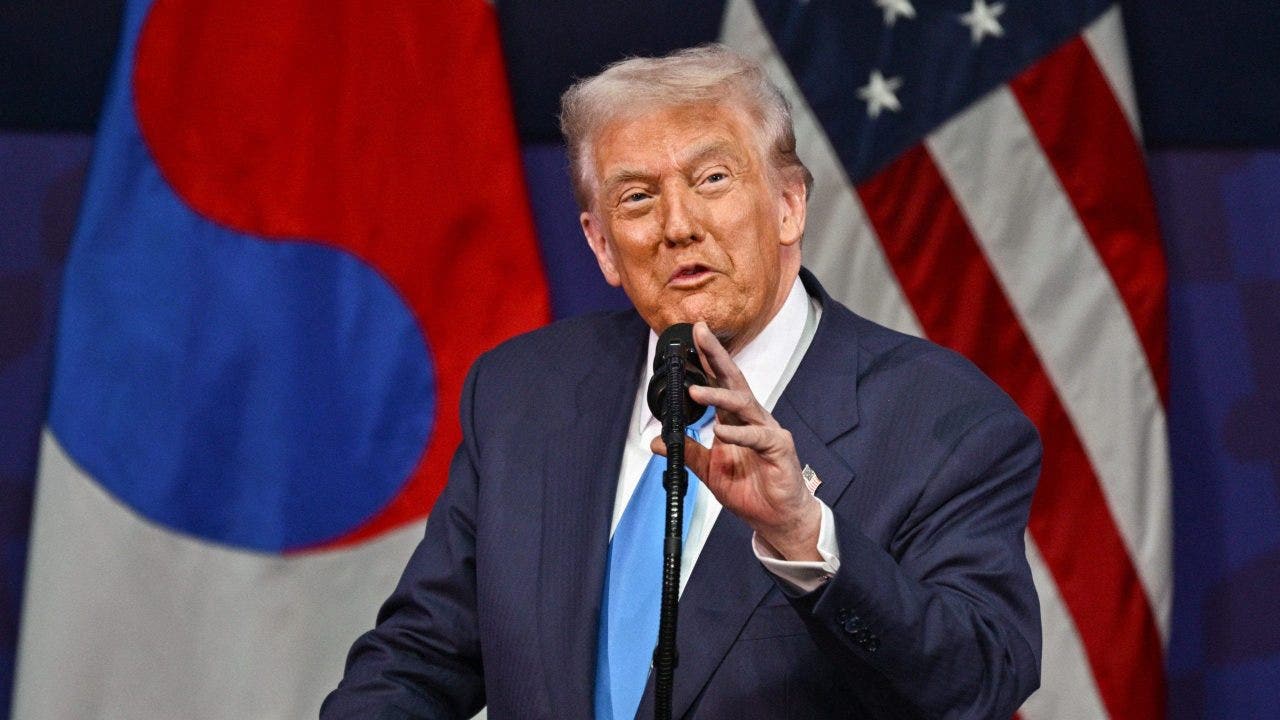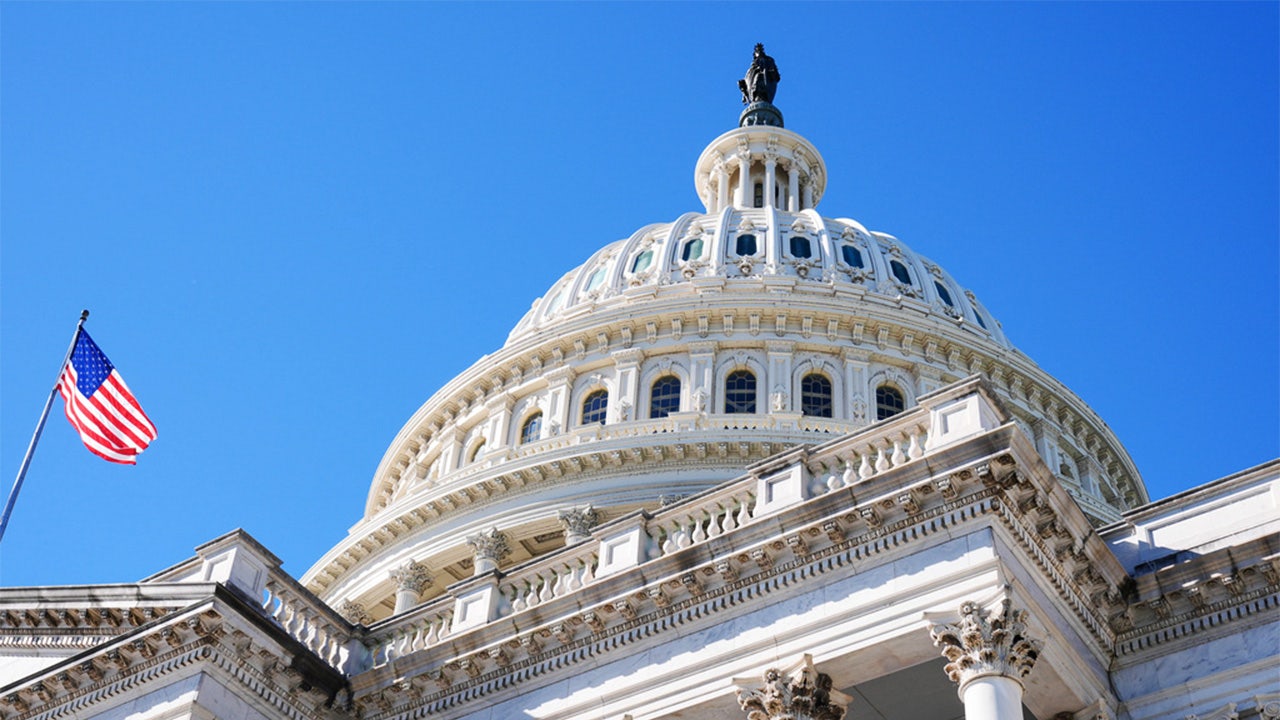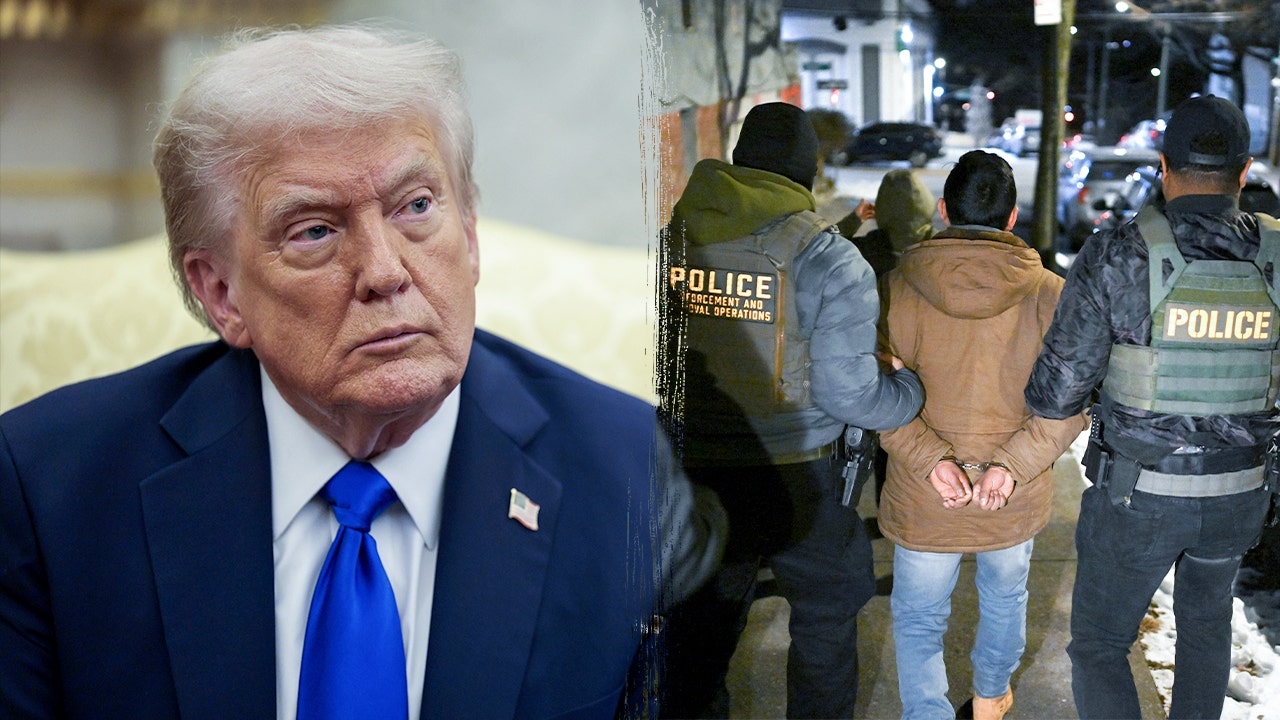Alaska
Take a trip to the Asian island that could play a role in Alaska's future • Alaska Beacon
Thirteen hours after boarding a jet in Seattle recently, I stepped off onto Asian soil, breezing through customs and into an air-conditioned subway.
I was bound for a city of skyscrapers, art, soup dumplings and glorious urban hiking: Taipei.
Maybe you already know a little bit about Taiwan, the nation of some 23 million people.
Some outdoorsy Alaskans have ridden the Huandao, a network of bike paths and roads that circumnavigate the mountainous island.
Or you’ve read about Taiwan on the news — how it’s under constant threat from China, its saber-rattling neighbor across an 80-mile strait.
Allow me to take you on a quick diversion to Asia from your regular life, to explain why Taiwan, which I visited in late October, matters to Alaska — and the rest of the world.
Martial law to progressive democracy
Two years ago, I took a trip to Japan, and while I was there, I made a side visit to Taiwan.
At the time, I was contemplating the idea of working as a foreign correspondent, perhaps in Hong Kong. But a friend who’d worked in journalism in Asia suggested I check out Taiwan instead, because Hong Kong’s future appeared increasingly depressing: The Chinese government had crushed the region’s pro-democracy protests, leaving little drama or nuance to report on.
The friend was right: Last week, dozens of demonstrators were sentenced to up to a decade in prison.
Taiwan’s future, by contrast, was setting up to be a compelling drama — one that’s still playing out today.
A quick history lesson. For centuries, Taiwan’s Indigenous population has shared the island with people of mainland Chinese heritage, who migrated there in waves. One of the largest waves came in the late 1940s.
That’s when more than 1 million Chinese nationalists, led by Chiang Kai-Shek, fled to the island after losing their country’s civil war to the communists, led by Mao Zedong.
Chiang became the leader of Taiwan, but once there, his government, in hopes of retaking the mainland, continued referring to itself as the Republic of China — a name that Taiwan still uses today.
Chiang’s rule over Taiwan was authoritarian and repressive: His forces killed tens of thousands of people during an 
But in the 1980s and 1990s, something surprising happened: Taiwan evolved into a thriving, progressive democracy.
Earlier this year, the Taiwanese people elected a new president, Lai Ching-te, in free and fair elections. Taiwan was the first Asian country to legalize same-sex marriage, in 2019. It holds an enormous annual Pride celebration in Taipei — this year’s included a speech from the vice president. There are regular protests and the country’s parliament hosts robust debate — including periodic fistfights.
The presence of that kind of open, democratic society — so close to China, and with a military supported by arms from the U.S. — risks serving as an inspiration to people living under Communist Party rule on the mainland. And it’s not the type of inspiration that the Communist Party likes.
Taiwan needs allies
On my previous trip to the island, I made some new friends and picked up on some of these political themes between bike rides, pork buns, monkey viewing and a Taiwan Series baseball game.

When I got home, I stayed up on Taiwan related news and kept talking about the country with an Anchorage friend of Taiwanese heritage.
He, in turn, connected me with the Taiwanese government’s office in Seattle. Which, as it turns out, is always looking for interested journalists to invite to the island.
After a brief correspondence, I was told, in February, to block off a week in October for an official visit.
I arrived back in Taipei on a Friday afternoon — just in time for dinner with a couple of Alaska friends who had also traveled to Taiwan for a bike trip. We sat outside next to a fish market, eating skewers of grilled beef, veggies and scallops, before I rode the mile back to my hotel room on one of Taipei’s ubiquitous shared bicycles — rentable for about a dollar an hour with a smartphone.

The next day I watched the Pride parade, a raucous festival of queer culture with floats sponsored by Uber and Google.
Another bike ride took me to a train to a bus, for an overnight stay in Taiwan’s northeast corner. I spent it in Jiufen, a mountainside getaway of tea rooms and guesthouses, then hiked and explored markets and museums the next day before returning to Taipei for the start of my official visit.
More about the official part: To preserve their relations with China, all but roughly a dozen of the world’s countries decline to give Taiwan formal diplomatic recognition — meaning that its government has to get creative to forge ties with sympathetic populations.

A few times a year, the Ministry of Foreign Affairs, or MOFA, pays for an entire delegation of journalists to spend a week in the country — mostly for meetings with government officials, but also for gorging themselves on Taiwan’s delectable cuisine and viewing tourist attractions like a remarkably lifelike miniature cabbage carved from jade.
For me, this entailed criss-crossing Taipei in a curtain-festooned tour bus with a very solicitous MOFA staff member and a dozen other reporters — from Haiti, Slovakia, the Netherlands, Canada, Italy, Australia, Finland, Nigeria and South Korea.
The initiative is hosting around 100 reporters this year at a total cost of some $500,000, which largely pays for journalists’ flights and hotels, according to MOFA officials. To maintain my independence and credibility in reporting on Taiwan, I combined my trip with a vacation, paid for my own plane ticket to Taipei and found a cheap AirBnB; I did not pay for the group meals hosted by MOFA.
“We try to make friends with the rest of the world,” Catherine Hsu, a top MOFA official, told us over the fanciest lunch I’d ever eaten — seven courses dished out at a hotel restaurant inside Taipei’s main railway station.

Taiwan needs friends because without them, it stands little chance against its large, powerful neighbor across the strait.
Taiwan is an economic powerhouse: Its biggest company, Taiwan Semiconductor Manufacturing Co., is the global leader in high performance semiconductors and has been valued at more than $1 trillion; the island also is home to other semiconductor businesses and high-tech industries.
But even a country whose per-person gross domestic product is in line with Israel’s and Spain’s can’t compete with the blunt force threatened by China, which calls Taiwan a “sacred and inseparable part” of its territory and vows to reunify it.
Taiwan currently spends some $20 billion a year on national defense, and military infrastructure and bomb shelters dot the island. But China’s defense budget is roughly 10 times that, and it regularly conducts menacing military drills — in one recent case, simulating a blockade of Taiwan and in another, launching missiles that flew over the island.
As Lai, the Taiwanese president, visited Hawaii this week just after a newly approved U.S. arms sale, China’s military issued a statement saying it would “resolutely crush any ‘Taiwan independence’ separatists.”
‘We will play an important role’
Over our week in Taiwan, my group was ushered from ministry to ministry, with briefings on subjects like the nation’s network of high-tech industrial parks and its efforts to transition toward more climate-friendly energy sources.
But many of our meetings were dominated by a force that wasn’t in the room: China. We heard from criminal investigators about how Taiwan’s decades-long exclusion from the United Nations, at China’s behest, means it can’t participate in Interpol, the international policing organization. It has also been blocked from formal membership in the World Health Organization and the U.N.’s official climate talks.
Think tank officials reeled off polling data about Taiwanese citizens’ willingness to take up arms against China. And media fact-checkers told us about disinformation campaigns suspected to be seeded by China-aligned operatives.
Anchorage Democratic Sen. Bill Wielechowski also visited the country earlier this year and came away with similar impressions. 
“The whole country, their whole identity is wrapped up in this notion that, at any time, China could come in and take over,” Wielechowski told me.
Wielechowski, who traveled with another Alaska state senator, Anchorage Democrat Elvi Gray-Jackson, is the latest in a long line of Alaska politicians to establish ties with Taiwan. Republican former Gov. Frank Murkowski is also a longtime ally, having taken more than two dozen trips to the country and served as an observer at Taiwan’s presidential elections.
Wielechowski’s and Gray-Jackson’s primary interest in Taiwan was foreign trade and reviving once-robust sales of Alaska products to the country. The state formerly had a trade office in Taipei, supporting substantial exports of Alaska timber and oil, and the two are interested in reviving it.

But Taiwan’s future is also directly relevant to Alaskans because of how Chinese military action could prompt an American response.
Alaska military bases host dozens of U.S. fighter jets, and experts say that if there’s any kind of conflict over Taiwan, their pilots and support crews are very likely to be dispatched to the Pacific.
“Look, I’m not going into war plan stuff, because that’s all classified and everything,” GOP U.S. Sen. Dan Sullivan told me last week. But, he added, two hours before our conversation, he’d had a discussion with Admiral Samuel Paparo, the commander of some 380,000 U.S. Indo-Pacific forces and civilians.
“We will play an important role,” Sullivan said. “We have a lot of forces, who are very close to the theater — closer than Hawaii. A major conflict in the Taiwan Strait would significantly impact the active duty forces in Alaska.”
Uncertainty with a new U.S. president
Sullivan, a former U.S. Marine, was once deployed to the Taiwan Strait and has since visited the country several times as a senator.
He’s been a key Republican ally of Taiwan in the U.S. Congress, amid an increasing penchant for isolationism among members of his party.
His staff sent me a 24-page booklet — “A Test of Wills: Why Taiwan Matters” — that it had made out of a series of Sullivan’s policy speeches.
But it’s too early to say if his views will win out in the new presidential administration. A Wall Street Journal correspondent shadowed Sullivan in Asia earlier this year, with the 
“In Taipei and Singapore, Sen. Dan Sullivan looks to quell foreign leaders’ fears that the U.S. won’t stand by allies if Trump wins,” the subhed reads. The piece describes Sullivan telling Taiwan’s vice president that “you can count on the United States of America,” but added that that promise “wasn’t wholly within (Sullivan’s) power to keep.”
My visit to Taiwan was just before Donald Trump won his second term. The U.S. election came up at nearly every meeting, with my fellow journalists repeatedly pressing Taiwanese officials on how they’d deal with Trump if he took office again.
Previously, Trump has said that Taiwan should pay the U.S. for its defense and complained that the island’s semiconductor industry is stealing American jobs; a former top aide said Taiwan could be “toast” if Trump was re-elected.

Taiwanese officials largely brushed off those comments and said they could work with Trump; one jokingly told us that, as a businessman, perhaps Trump could broker a deal to sell Taiwan some state-of-the-art F-35 fighter jets.
(The very solicitous Ministry of Foreign Affairs staffer followed up the next day with a group text requesting that the comment be considered off-the-record; I politely refused, given that the relatively high-ranking official declined to walk it back himself when given the opportunity immediately after he spoke.)
In our interview, Sullivan pointed out that Republican U.S. Sen. J.D. Vance, the vice president-elect, has spoken “publicly and very strongly” of the geopolitical importance of Taiwan — even as Vance has been much more skeptical of U.S. support for Ukraine.
But there’s little doubt that the election results are injecting new uncertainty into what’s long been an important alliance between the U.S. and Taiwan — at a time when the island is under increasing pressure not just militarily but economically.
Earlier this month, Reuters reported that SpaceX — run by Trump booster Elon Musk — asked some of its Taiwanese suppliers to transfer manufacturing to other countries because of China’s military threat. The news agency also reported last year that offshore wind power developers are increasingly thinking about how to insure their projects in the Taiwan Strait against events like war.
How, exactly, the U.S. should respond to these developments isn’t a question for me — it’s a question for the American public and its elected officials. And the public just gave those officials some strong signals by electing Trump.

There are compelling reasons for America to avoid another foreign military entanglement, which, in Taiwan, would almost certainly put Alaska service members in harm’s way.
But I’ve also seen Taiwan twice now, with my own eyes, and I can attest to what’s at stake. Its mist-flanked mountains, modern skyscrapers and high-tech semiconductor foundries. Its nightclubs and queer culture. And, most importantly, a democratic society where political and cultural freedoms have flowered in the ashes of an authoritarian past.
“They say, ‘Today, Ukraine,’” one of the Taiwanese officials told us on our visit. “‘Tomorrow might be Taiwan.’”
Nathaniel Herz welcomes tips at [email protected] or (907) 793-0312. This article was originally published in Northern Journal, a newsletter from Herz. Subscribe at this link.
GET THE MORNING HEADLINES.

Alaska
Anchorage assistance center opens for Western Alaska storm evacuees
A new center opened Monday to provide disaster recovery services to Western Alaska residents displaced by ex-Typhoon Halong who evacuated to the Anchorage area, state officials said.
Available services at the hub include help with state and federal disaster recovery aid applications, business and homeowner loan application support, social services, and tribal identification replacement, the State Emergency Operations Center said in a statement Monday. State officials said the effort is in cooperation with Calista Corp.
The Disaster Assistance Center, located in the Calista building at 1400 W. Benson Blvd, Suite 110, will be open weekdays from 10 a.m. to 5 p.m. through Nov. 14, according to emergency officials. Evacuees needing a ride to the center can contact Alaska 211 by dialing 211 or 1-800-478-2221, emailing alaska211@ak.org or visiting alaska211.org.
Similar services have been offered in Bethel, where some displaced by last month’s disastrous Yukon-Kuskokwim Delta storm have also sought shelter.
State emergency officials in an update Sunday said that there have been 1,280 applications for state individual assistance and 491 applications for Federal Emergency Management Agency aid. The federal aid became available after President Donald Trump’s Oct. 22 federal disaster declaration.
The deadline for those seeking state aid is Dec. 9. It is Dec. 22 for anyone applying for federal assistance.
Alaska
Planetarium in Fairbanks slated to open in a few months

ANCHORAGE, Alaska (KTUU) – A planetarium at the University of Alaska Museum of the North in Fairbanks has been in the works for years. And it’s only a few months away from opening, according to University of Alaska Museum of the North Director Patrick Druckenmiller.
It has been an idea for decades, but construction began about a year ago on the University of Alaska Fairbanks’ campus in collaboration with the Geophysical Institute, Druckenmiller said.
“What this facility will essentially allow us to do, is welcome, when thousands of people per year that come to our museum an opportunity to see things like the Aurora in a planetarium setting. Because, of course, that’s not something they’re going to see when they’re visiting in the summer. But it’s also going to be the coolest, newest classroom on the UAF campus,” he said.
Druckenmiller said it will be Interior Alaska’s first planetarium.
“There are three others in the state, two in Anchorage, one in Juneau,” he said. “It’s also going to be the northernmost planetarium in North America, which is also kind of a cool claim to fame for our facility.”
The 65-seat planetarium is a roughly 5,700 square foot addition to the existing museum, he said.
“When you walk into the planetarium space, which you’re going to see is this big dome above your head. It’s about 11 meters, or about 36 feet, in diameter. And it’s actually sort of suspended from the ceiling. And it’s tilted at about a 17-degree angle towards the front of the room. That’s to help make people feel comfortable looking up and not having to crank their neck to look up at the sky,” he said.
The planetarium’s content will not be strictly space related.
“We intend to showcase a lot of other really cool aspects of things relating to Alaska and the Arctic. And of course, it’s indigenous peoples,” he said.
Druckenmiller is excited for the opportunity to use the planetarium to highlight University of Alaska research.
“For example, the Geophysical Institute is a major place for research into the atmosphere, other geophysical phenomena, including the aurora, solar physics, you name it,” he said. “This planetarium is now going to be a place to share some of that cool science, rather than us just simply bringing in science from elsewhere. We’re doing it here in Alaska. So, it’s a wonderful showcase for Alaskan-based research.”
The bulk of the building construction cost was paid for by two longtime Fairbanks residents.
Walt and Marita Babula’s $7.4 million donation funded much of the construction of the building, Druckenmiller said.
The planetarium will be named after them, the university said.
The Babulas want the planetarium to “enable space science education opportunities for K-12 and higher education students,” according to a statement from a university press release.
“We also envision the planetarium as a place that will spark the curiosity of Alaskans and visitors from around the globe about our Alaska culture and vast universe,” they continued.
“They, out of the incredible generosity of their heart, really wanted the museum to be a place where we could also have a planetarium to share all the wonderful things about space science and astronomy, particularly with the kids that live here in interior Alaska,” Druckenmiller said.
Other donors include the M.J. Murdock Charitable Trust, as well as Sarah and Cary Keller who have been longtime UAF supporters, according to the university. Michael and Lynn Rice Estate, Davis Constructors & Engineers and RESPEC also contributed to the project.
See a spelling or grammar error? Report it to web@ktuu.com
Copyright 2025 KTUU. All rights reserved.
Alaska
Editorial: Hawaiian’s spirit on Alaska’s wings | Honolulu Star-Advertiser
-

 Milwaukee, WI6 days ago
Milwaukee, WI6 days agoLongtime anchor Shannon Sims is leaving Milwaukee’s WTMJ-TV (Channel 4)
-

 News7 days ago
News7 days agoWith food stamps set to dry up Nov. 1, SNAP recipients say they fear what’s next
-

 Alabama1 week ago
Alabama1 week agoHow did former Alabama basketball star Mark Sears do in NBA debut with Milwaukee Bucks?
-

 News1 week ago
News1 week ago1 dead, 6 injured in shooting at Lincoln University homecoming festivities
-

 Austin, TX1 week ago
Austin, TX1 week agoDia De Los Muertos Austin: Parades, Altars & Events
-

 Culture5 days ago
Culture5 days agoVideo: Dissecting Three Stephen King Adaptations
-

 Culture1 week ago
Culture1 week agoVideo: Tyler Mitchell Breaks Down Three Photos From His New Book
-

 Seattle, WA6 days ago
Seattle, WA6 days agoFOX 13’s Aaron Levine wins back-to-back Jeopardy! episodes



















